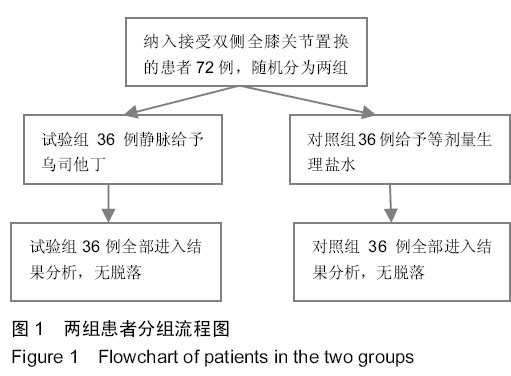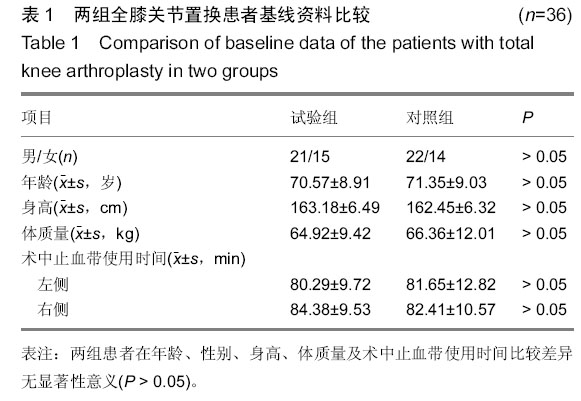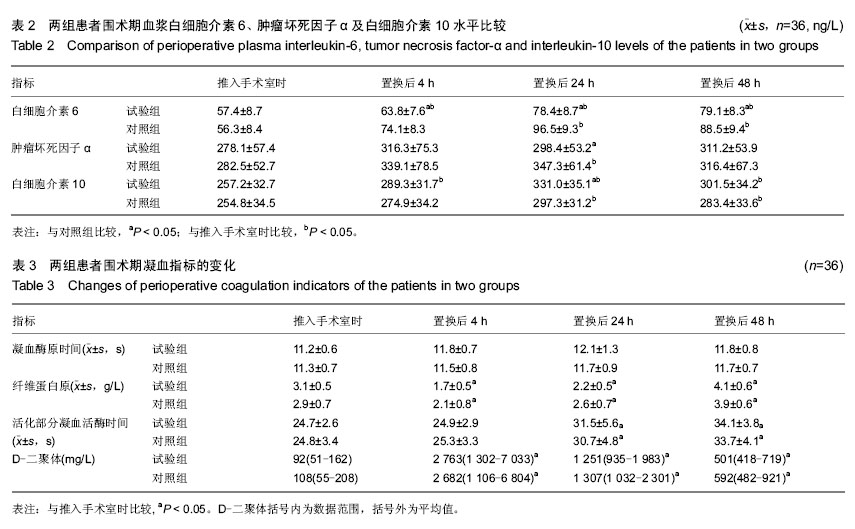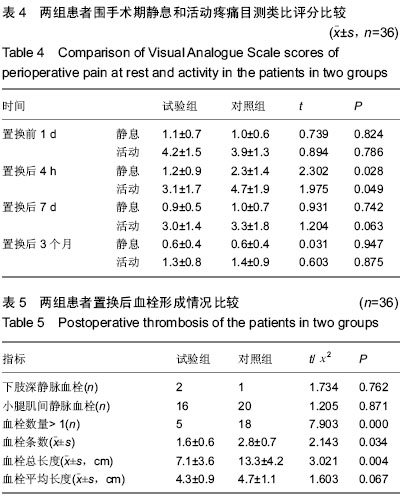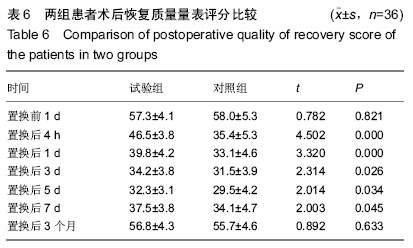中国组织工程研究 ›› 2015, Vol. 19 ›› Issue (22): 3445-3450.doi: 10.3969/j.issn.2095-4344.2015.22.001
• 人工假体 artificial prosthesis • 下一篇
乌司他丁在全膝关节置换中的应用
冯继泽
- 南方医科大学附属深圳市龙华新区人民医院麻醉科,广东省深圳市 518109
Application of ulinastatin to total knee arthroplasty
Feng Ji-ze
- Department of Anesthesiology, Shenzhen Longhua District People’s Hospital, Southern Medical University, Shenzhen 518109, Guangdong Province, China
摘要:
背景:乌司他丁是从人尿液中分离纯化提取的广谱胰蛋白酶抑制药。其主要药理机制是抑制溶酶体酶等多种水解酶的过度释放,从而改善组织灌注和微循环。目前关于乌司他丁对全膝关节置换后急慢性疼痛及置换后深静脉血栓发生率的影响报道较少。 目的:观察乌司他丁对应用充气式止血带条件下接受双侧全膝关节置换患者的炎性递质、置换后疼痛、置换后凝血功能、下肢深静脉和浅静脉血栓发生率及置换后肢体功能恢复的影响。 方法:选择接受双侧全膝关节置换的患者72例,随机分为对照组和试验组,各36例。试验组静脉给予乌司他丁,对照组给予等剂量生理盐水。所有患者麻醉镇痛方案及置换后功能康复方案均相同。在不同时间点检测患者炎症指标、凝血指标,观察静息和活动时的疼痛评分及置换后恢复质量评分。根据下肢血管超声检查结果分析置换后血栓形成情况。 结果与结论:试验组部分时间点的炎症因子水平低于对照组(P < 0.05)。试验组置换后4 h的静息疼痛目测类比评分显著低于对照组(P < 0.05)。各时间点两组患者凝血功能指标差异无显著性意义(P > 0.05)。与推入手术室时比较,置换后4,24 h时两组患者纤维蛋白原水平均明显下降,置换后48 h时明显升高(P均 < 0.05);置换后24,48 h时两组活化部分凝血活酶时间均明显延长(P < 0.05);置换后4-48 h时两组D-二聚体表达水平明显升高(P < 0.05)。与对照组相比,试验组血栓条数显著减少,血栓总长度明显短,差异均有显著性意义(P < 0.05)。试验组在置换后4 h、置换后1,3,5,7 d置换后恢复质量评分均高于对照组(P < 0.05)。提示乌司他丁可以减轻全膝关节置换患者的炎性反应,缓解置换后早期的疼痛,减少下肢肌间静脉血栓形成数量,减缓血栓形成的速度,提高患者置换后恢复质量。
中国组织工程研究杂志出版内容重点:人工关节;骨植入物;脊柱;骨折;内固定;数字化骨科;组织工程
全文链接:
中图分类号:
